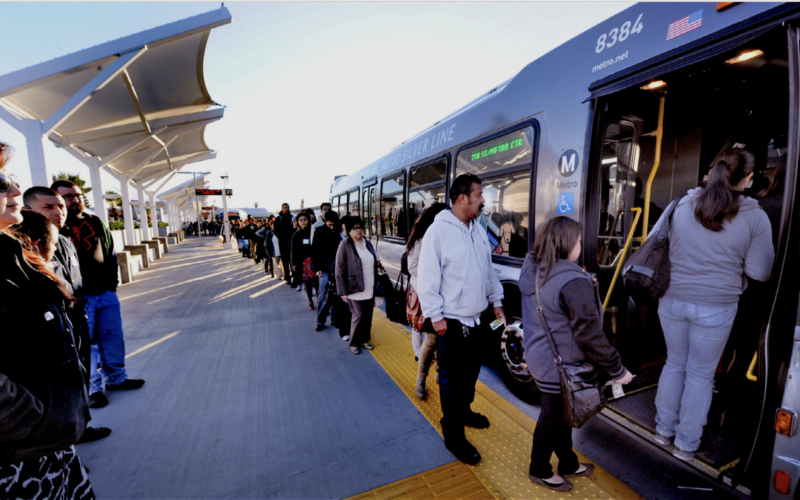
We’re thrilled to announce our brand-new Women Changing Transit mentorship program! This program aims to connect women transit professionals with women leaders in transit to serve as mentors to help guide, advise and grow in their careers. The year-long mentorship program is open to applicants who identify as women, as gender queer, or non-binary, and who are in the first 10 years of their career, in any facet of the transportation field: planning, engineering, administration, operations, finance, and advocacy. The multidisciplinary nature of this mentorship is intended to support and enhance connections and relationships across public/private/non-profit lines.
Mentees must commit to once a month check-ins with assigned mentor as well as to 3 in-person meetings with the group over the course of the year. The first in-person meeting will be a study trip, focused on mentors and mentees getting to know one another, and sharing their successes and challenges in the field. The second two in-person meetings are designed around existing industry conferences and offer an opportunity to engage with the wider transportation community while also spending time in-person with the mentor-mentee group.
This program will cover mentee travel, expenses, and conference fees.
To apply to be a mentee, please fill out this Google Form application or this hard copy application by Wednesday, February 27th. Please note: we have already identified mentors for the 2019 program. If you have any questions, please email Ashley Pryce at [email protected]
 “Who Rules Transit?” Chronicles the Gulf Between “Who Decides” and “Who Rides” at Transit Agencies
“Who Rules Transit?” Chronicles the Gulf Between “Who Decides” and “Who Rides” at Transit Agencies
Our latest report reveals a yawning gap between the demographics of transit riders – primarily women and people of color – and leadership at transit agencies – primarily white men.
Read More Introducing Subtext, a Zine from Women Changing Transportation
Introducing Subtext, a Zine from Women Changing Transportation
We’re thrilled to release the first issue of Subtext, a zine created by members of the Women Changing Transportation cohort.
Read More